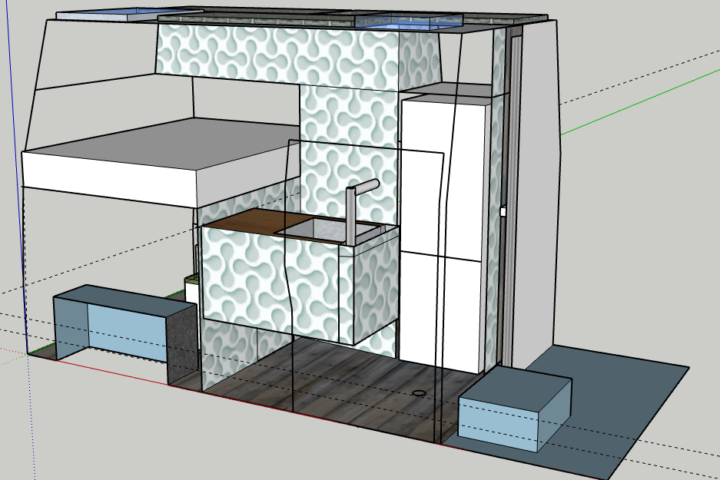If you want to build a warm weather camper, you can probably neglect this article but for all-season vanlifer this is probably one of the most important topics. Unfortunately, the community is pretty stuck here and everywhere you get Armaflex from Armacell as the miracle cure for vehicle insulation touted. However, if you do a little research, you will quickly discover that Armaflex is used for insulation in refrigeration technology. From a functional point of view, this is not a bad thing, but why aren’t these foam insulation mats also used in house construction or in other areas? If you do a little deeper research, you will immediately be faced with a horror scenario of outgassing plasticizers, and you don’t want that in your bedroom, do you?
This can also be put into perspective somewhat, because the Armaflex also disappears behind a wall and is enclosed for the time being. But a simple covering with felt, as I have already seen, I personally consider questionable. So for me Armaflex is ruled out in any case but what are the alternatives?
Here I am very grateful to Viki, because on her YouTube channel Vanilla Icedream she shows a material which everyone knows but only with intensive research in the field of energy-efficient and sustainable house building is found: Cork!!!
You could actually use the discarded pinboard, but this is interspersed with additional glue, so I use insulating cork. This is baked, or re-expanded. That means that the cork crumbs eject their own resin by heating, which then glues the cork parts together when cooling. 100% nature in other words.
the facts:
| material | insulation cork 20mm | Armaflex 19mm |
| production | natural resource | chemical resource |
| Environmental compatibility | sustainable (cork oak) | Environmentally harmful |
| Thermal conductivity | 0,032 – 0,04 | 0,032 |
| Price (germany) | ca. 9,50 €/m² | ca. 11 €/m² |
| installing | external adhesive without solvent | selfadhesive |
| handling | Scoring, breaking (crumbly edges) | cut with sharp blade |
| weight | ca. 1,5 kg/m² | ca. 1,018 kg/m² |
Since insulating cork is a natural product, the data can of course vary!
If you look at the table, there is actually only one disadvantage with the insulating cork. The weight can tip the scales in the end. To counteract this, I will also follow the idea of Viki and line the walls only with rolled cork in a thickness of 4-8 mm and still use an additional insulation layer such as coconut fiber, hemp or jute. This is similar in processing to “Rockwool” but also sustainable and environmentally friendly. And it fulfills in sum what actually everyone wants. A warm, non-hazardous and environmentally friendly home.
Here are the obligatory links to the recommended products:
* The links are so called affiliate links. This is a fair way to support me and say thank you, because it costs you nothing except the regular price of the item and I get a commission for your purchase which helps me to realize this project and the following.




It’s hard to find educated people for this topic, however, you seem like you know what you’re
talking about! Thanks